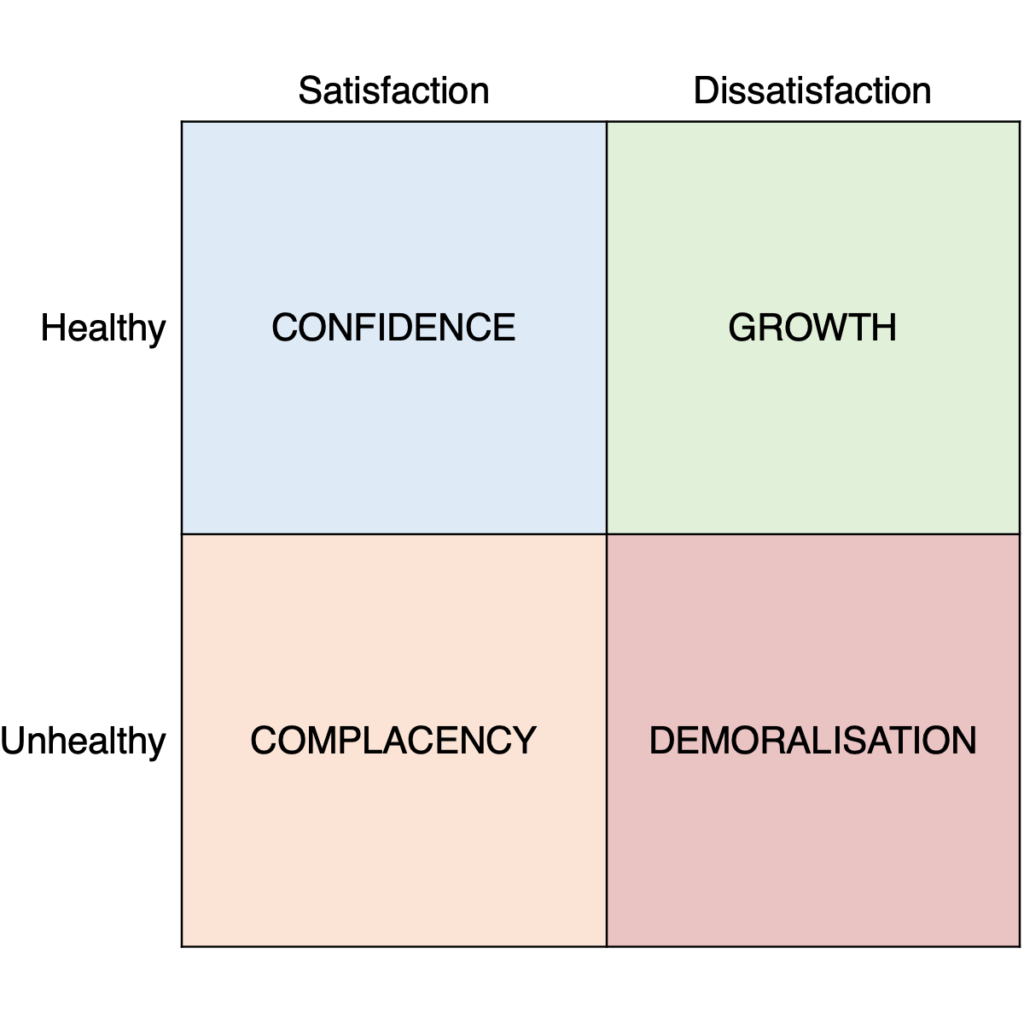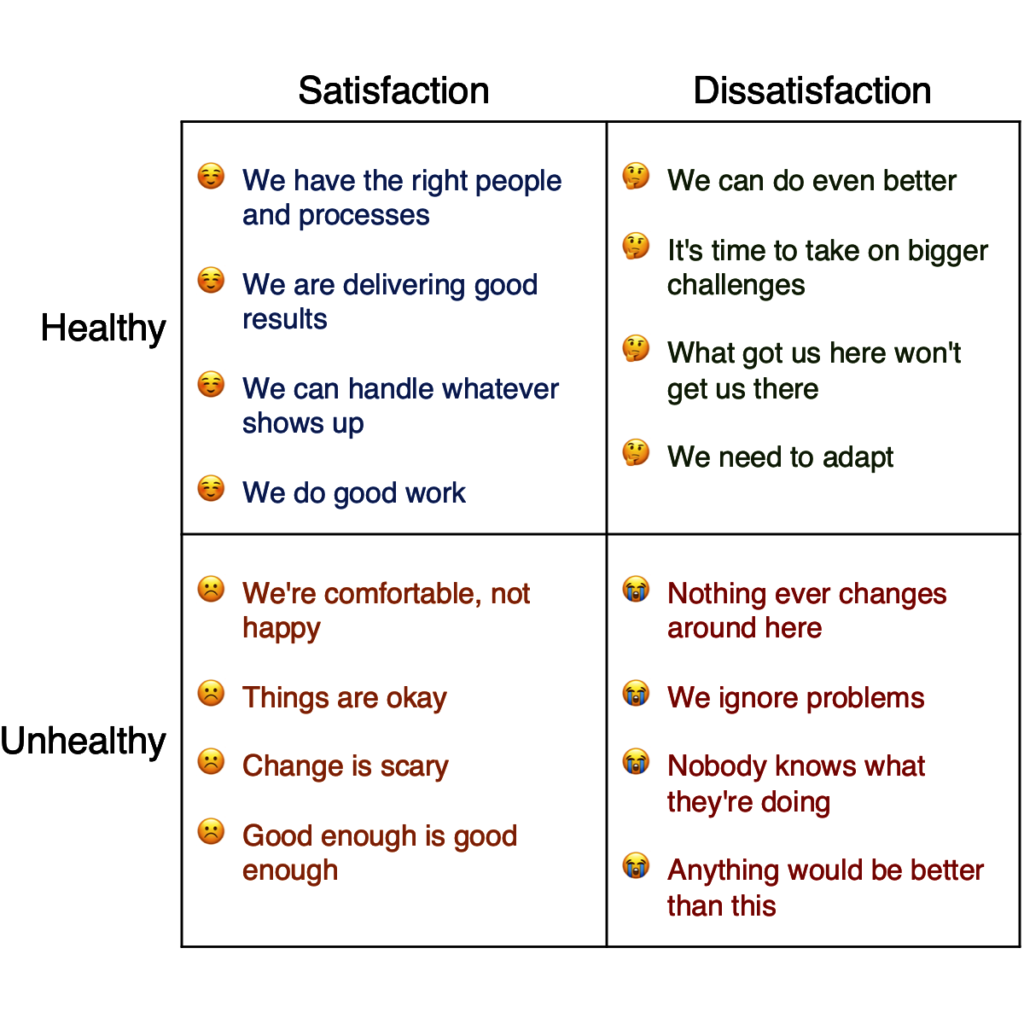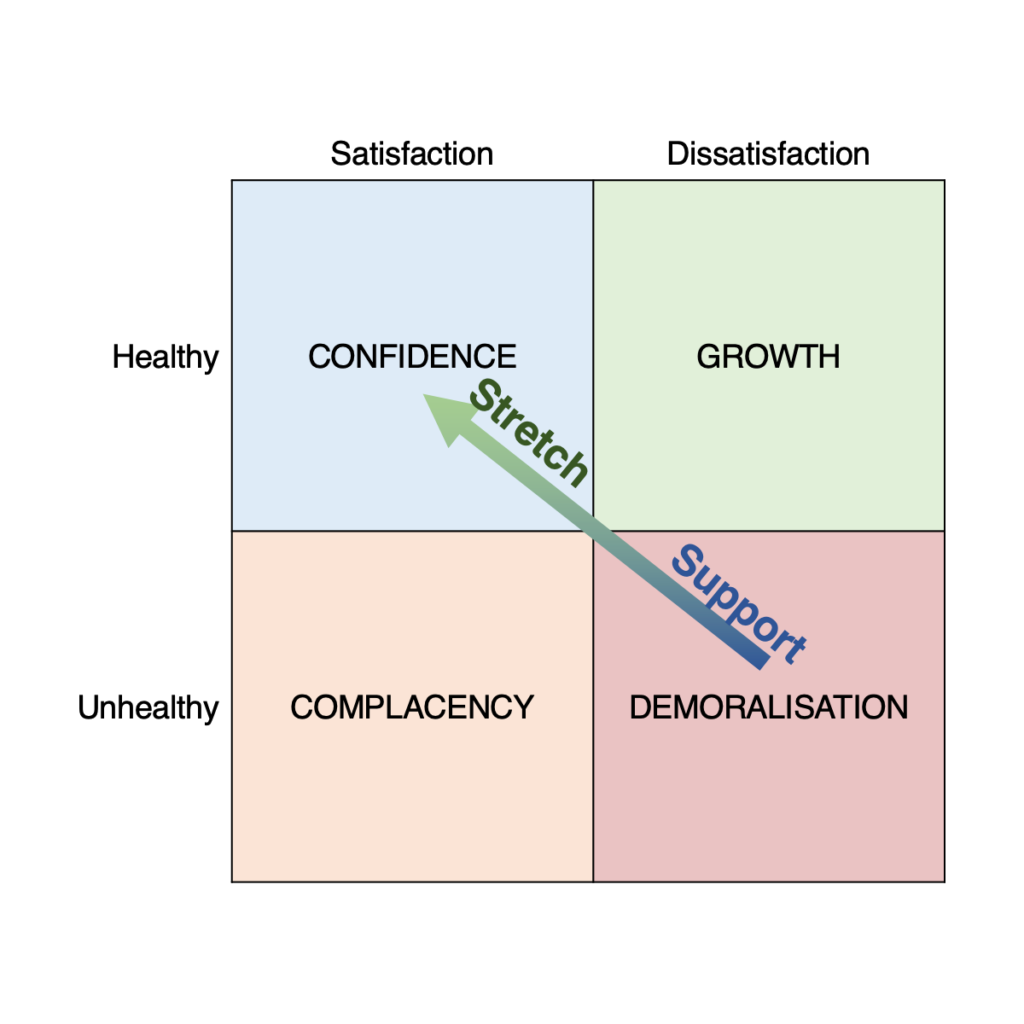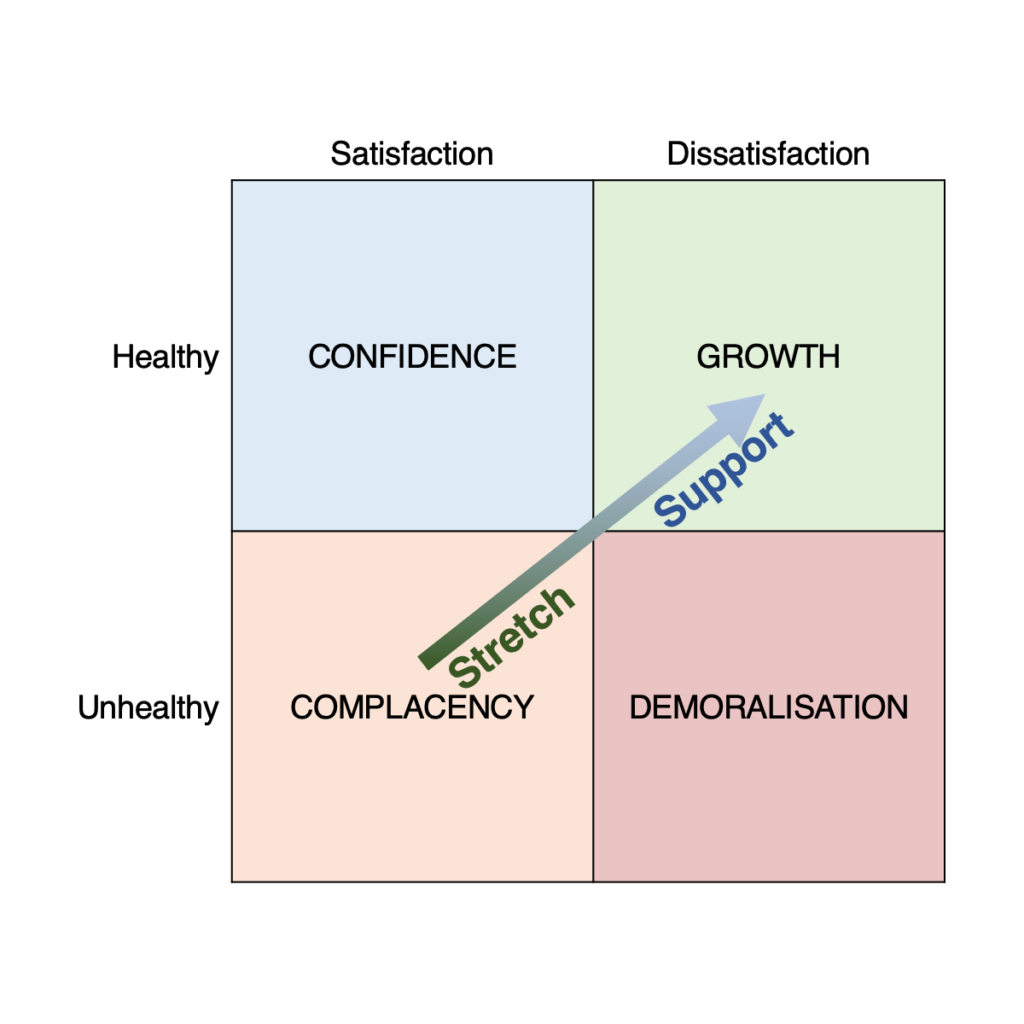“The CEO has approved our project. We have 20% time for the next two weeks to refactor the reporting system, and Sales agrees no reporting demos during that time.” Rami smiled as though I had just given him a puppy. Not the wry, guarded smirk I’d seen before as he used his Masters in Engineering to grind through convoluted queries of a poorly-structured dataset. This was a real smile.
It was going to be hard work ahead to get this key system modernised without losing critical data along the way. I knew because I’d agreed with some trepidation to be part of the launch.
So why was he so happy?
Right now every engineer in your department has either healthy or unhealthy levels of satisfaction or dissatisfaction. It looks like this:

Rami had veered between complacency (the smirk) and demoralisation (the sarcastic “jokes” in response to new feature requests from sales). As an engineer, you can always tell where you are at by the voices in your head. A good leader often picks up on the ones you verbalise as well. The voices say things like this, and they quickly turn in to culture the more they get repeated:

Leaders often formulate “stretch goals” to establish a trajectory for their team. They hope this will shake up the complacent (which it will) and lead the demoralised into confidence and growth. Unfortunately, it doesn’t quite work that way. Stretching is only one ingredient, not the meal.
Instead, much like checkers, you can’t just move up– you must move diagonally:


Without support, a “stretch” is just a demand that increases pressure as it lowers morale. It may tip the complacent into demoralisation, and cause the demoralised to leave, but is unlikely to do much more. Combining support with stretching, however, can lift whole teams remarkably fast.
Order matters. It sounds incredibly cheesy but is entirely true that, “People don’t care how much you know until they know how much you care.” Real, practical help is the first step toward bringing the, “Nothing ever changes around here” crowd along. Anything else just garners lip service alongside inertia as “yet another try” at doing things differently gets dragged under by day-to-day demands.
Support also can occur within the formulation of the stretch, involving both the engineering and commercial part of the business in identifying and prioritising a vision of success in practical terms. For each stretch, ask your engineering team a few simple questions:
- What is the stretch?
- How will it make us get better?
- How will it make the company better?
- What support do we need to succeed?
- How can we measure our success?
The answers need not be lengthy, but addressing each question helps everyone to understand the purpose of the stretch, and how it might succeed or fail. Brokering support, in clearly-defined terms, from all quarters of the business, is necessary before kicking things off.
The new reporting system architecture Rami implemented made not only his life better. It was faster, and helped sales to sell. No amount of pizza in the break room or other perks could have reengaged him with the company. He had to do it for himself, with help.
That was nearly twenty years ago, and in that time I have seen variations of this process bring a greater sense of purpose to engineering teams no matter where they began on the map. Leadership and morale are not mystical. They involve careful observation, and good process, keeping everyone’s best interests at heart.
One such process is supported stretching. Teams go faster every time.
(Note: Identifying details from “Rami’s” story, including their name, have been changed to preserve confidentiality.)
Interested in learning more about how I could help you, your organisation, or your team? Learn more or get in touch.